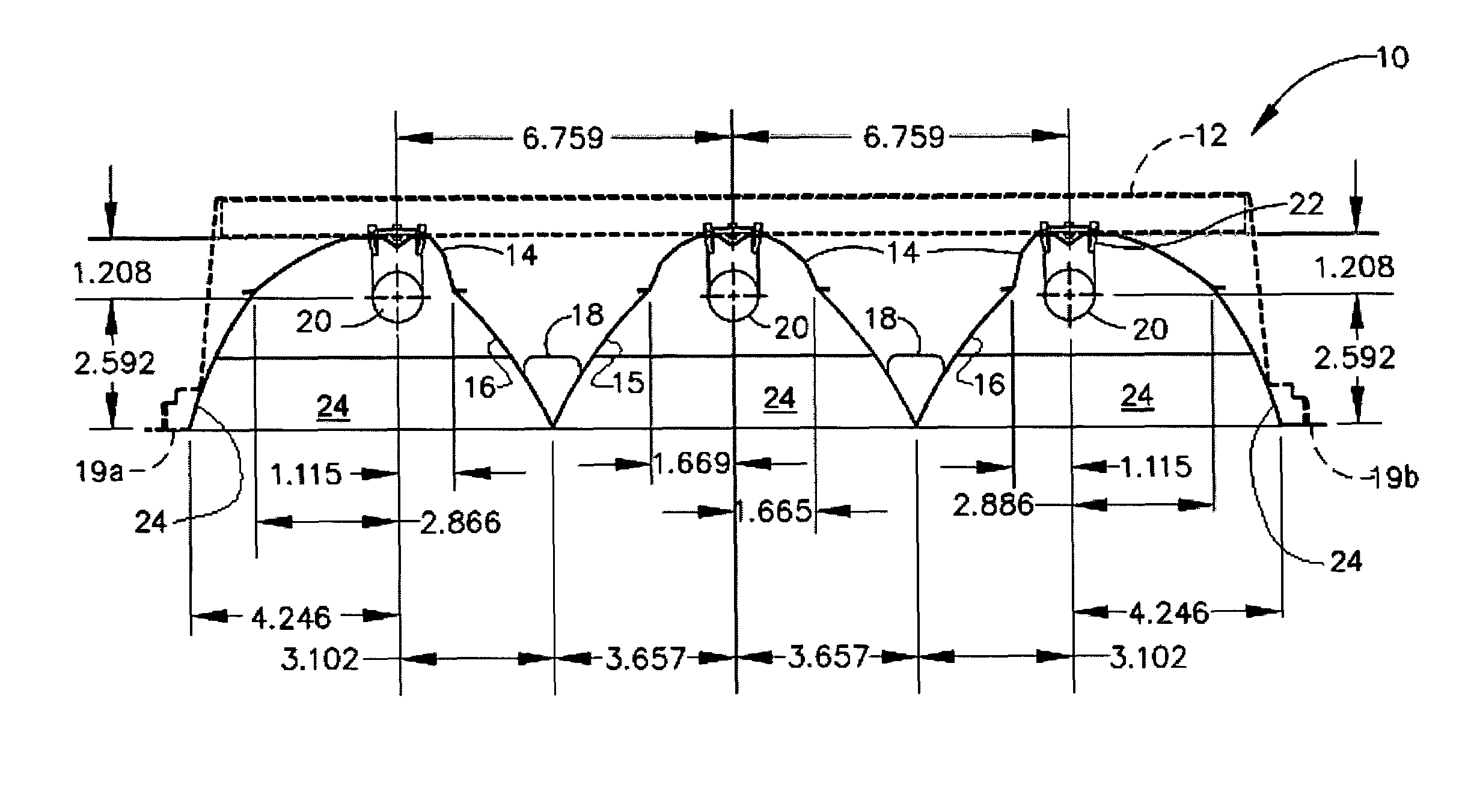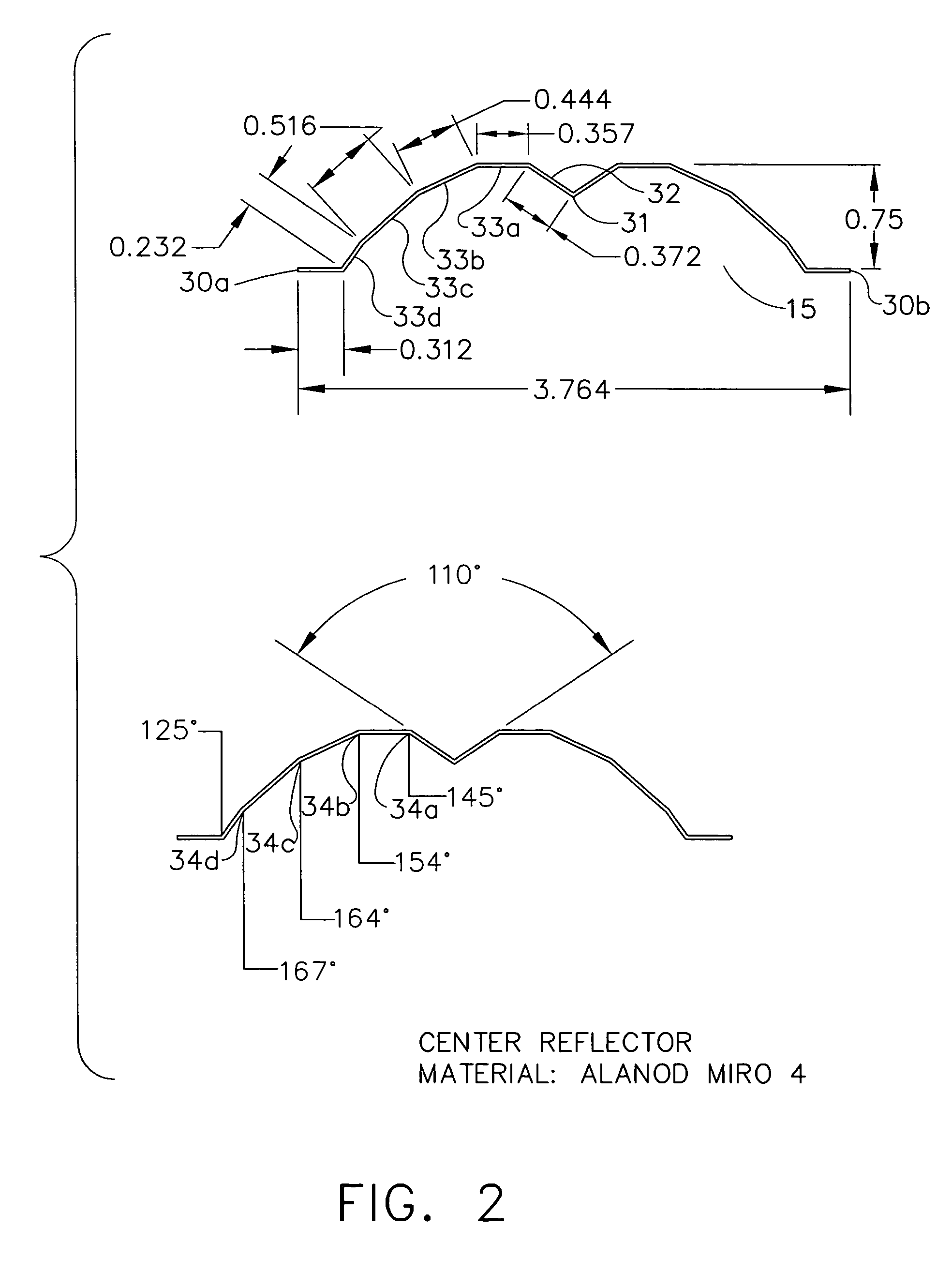Luminaire having symmetrically opposed asymmetrical reflectors
a technology of symmetrical opposing and asymmetric reflectors, which is applied in the field of luminaires, can solve the problems of not being optimized for any particular application, the light pattern emitted is not particularly efficient, and the luminaire is long and narrow, so as to minimize internal reflection, widen the light distribution pattern, and reduce the effect of internal reflection
- Summary
- Abstract
- Description
- Claims
- Application Information
AI Technical Summary
Benefits of technology
Problems solved by technology
Method used
Image
Examples
Embodiment Construction
[0022]The luminaire 10, as depicted in FIGS. 1 and 5, comprises a housing 12 in which three reflectors 14 are disposed, including a center reflector 15 and side reflectors 16. While it would be possible to form the reflectors together in a single piece, it is more convenient to form them as separate reflectors. The reflectors 14 are then joined using braces 18 with any common bonding means such as adhesives, screws or locking tabs. The outer edges 19a and 19b of the side reflectors 16 are then joined to the edge of the housing 12. Within each reflector 14 volume is a lamp 20 having a base at each opposed end 21, and which is held in place at the ends 21 via a set of commonly used fluorescent tube sockets 22. The sockets are electrically connected to a power source, and have an electric contact for electrically connecting to the base of the lamps. Louvers 24, as depicted in FIG. 5, can also be attached to the luminaire 10 to provide additional direction for the light.
[0023]FIG. 1 als...
PUM
 Login to View More
Login to View More Abstract
Description
Claims
Application Information
 Login to View More
Login to View More - R&D
- Intellectual Property
- Life Sciences
- Materials
- Tech Scout
- Unparalleled Data Quality
- Higher Quality Content
- 60% Fewer Hallucinations
Browse by: Latest US Patents, China's latest patents, Technical Efficacy Thesaurus, Application Domain, Technology Topic, Popular Technical Reports.
© 2025 PatSnap. All rights reserved.Legal|Privacy policy|Modern Slavery Act Transparency Statement|Sitemap|About US| Contact US: help@patsnap.com



